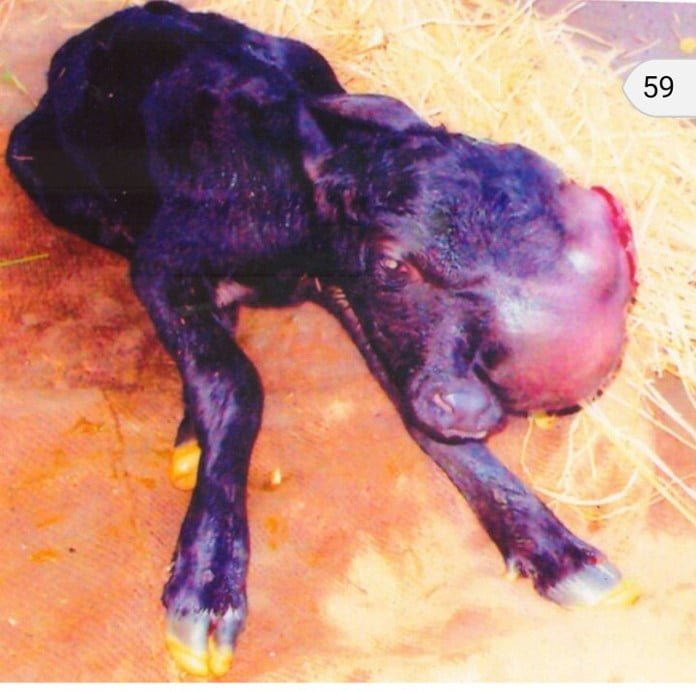DYSTOCIA DUE TO RARE FOETAL MONSTER IN A BUFFALO

Case history:
Dystocia due to rare foetal monster in a BUFFALO, A buffalo in its 3rd lactation was presented with a history of prolonged labour stage with forceful abdominal contraction.
Observation:
Upon examination we see there is a presence of abnormal foetus in anterior presentation.Both forelimbs flexed at knee joint resulting in blockage of birth canal.
Introduction:
- Monstrosity is a disturbance of development that involves various organs and systems which cause great distortion of an individual.
- These are developmental abnormalities of ovum, embryo and foetus.
- Occur in all species of domestic animals
causes:
- Congenital
- Due to abnormal duplication or disruption of inner cell mass in a embryo with partial duplication of various structures.
- Mostly duplication is of cranial portion.
- Less common in caudal portion.
- Viral infections
- Intra uterine exposure to poisons ingested by dam
- Vitamin deficiency (Vitamin A and folic acid)
- Hyperthermia
- Gene mutation
Diagnosis:
On Per vaginal examination Foetus present in anterior presentationBoth forelimbs flexed at knee joint resulting in blockage of birth canal.Abnormal monster head also felt similar to dicephalic. on Ultrasonography ( single heart beat felt). Hence, we diagnosed it as a dicephalic foetus (two head, two neck, one trunk region). Types of dicephalic monster
- Atlodymus (two complete and separate skull and one neck)
- iniodymus (two skulls with fusion at the occipital level),
- derodymus (two complete and separate skulls with two separate necks.
Differential diagnosis:
- Twins
- Diprospus ( in Diprospus two faces and two clefts and single head is present)
- Dipygus ( Duplication of trunk or limbs )
- Siamese twins( attachment of fetus at the level of sternum )
- Pygodidymus ( Two calves joined at the level of rump in opposite direction )
Incidence:
- Incidence of these is about 33.2 % including Diprosopus , Dicephalus , Dipygus , Siamese Twins , Pygodidymus.
- Incidence among all calves seems to range from 0.2 to 3.0 percent with 40 to 50 percent born dead and only a small fraction of reported defects not being externally visible.
treatment:
- Give epidural anaesthesia (2% lignocaine hydrochloride)
- Lubrication of hand with liquid paraffin.
- Then enter it into birth canal.
- Gentelly repel the foetus towards uterus.
- Flexed limbs were extended carefully using cup shaped hand.
- Foetus delivered with judicious traction.
- Foetus died after two days.
- Supportive therapy of dam for 5 days.
- Antibiotic
- Anti inflammatory drug.
- Fluid therapy.
- Uterine lavage with antiseptics.
Other possible treatments are fetotmy and C-section.
Delivered foetus:
- One foetal head was developed with absence of one eye
- Other head has no distinct differentiation of facial structures with absence of eyes, ears, nose and mouth parts.
- Hence, foetus resembled dicephalic monster.
Source Buffalo Bulletin (October-December 2016) Vol.35 No.4

Thanks for adding value to vet medicine!